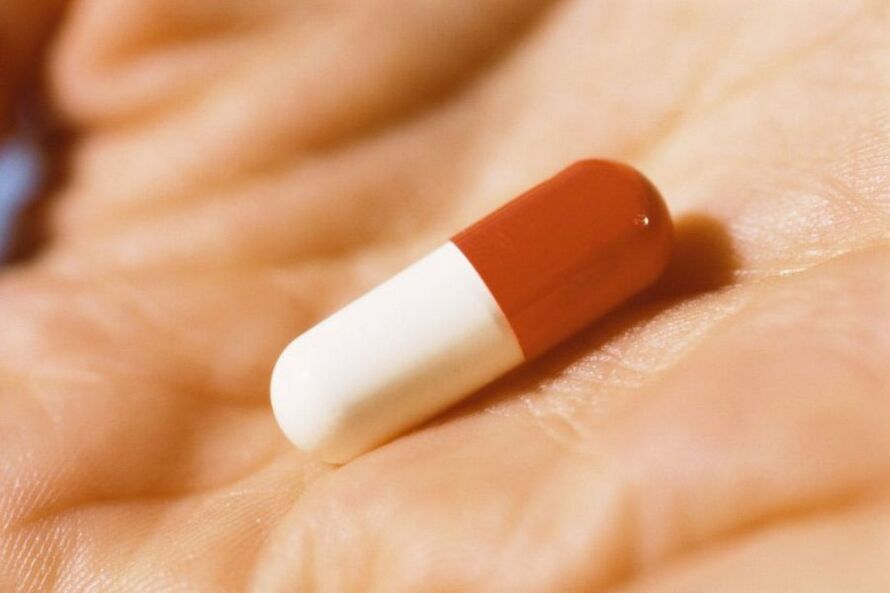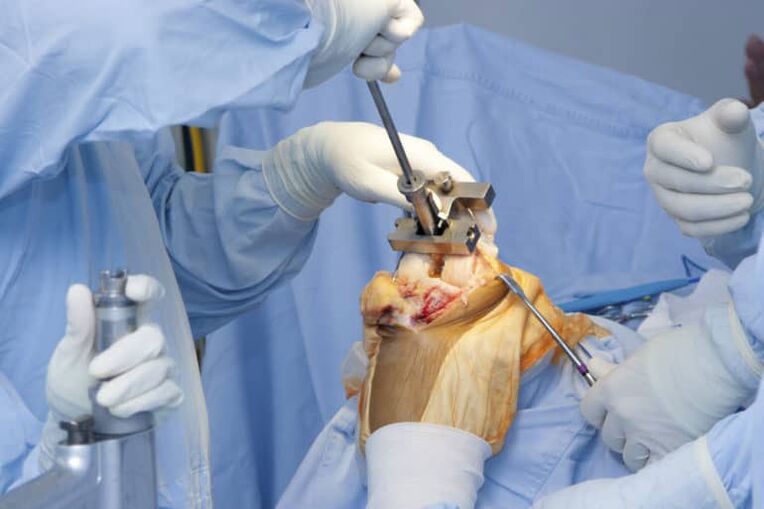
Osteoarthritis of the knee joint is a degenerative damage to the cartilage of the knee joint, as a result of which it is destroyed. Osteoarthritis is the most common pathology and, according to doctors, about 80% of people suffer from this pathology to one degree or another. It is the third most common disease after cancer and heart disease. All this suggests that the treatment of osteoarthritis of the knee joint does not yet have methods that will help to completely eliminate the disease.
Treatment principles
There are several principles on how to treat osteoarthritis of the knee joint, which should be the basis for treating the disease:
- The knee joint damaged by osteoarthritis should be relieved immediately from excessive physical activity during therapy. It is not so easy to cure osteoarthritis of the knee joint, but it will prevent complications. If possible, it is usually necessary to limit the movement of the joint and follow the established regimen prescribed by the doctor.
- In parallel with the treatment, do not take too much care, so that the atrophy of muscle tissue does not begin. It is better to participate in affordable physical therapy. Which doctor treats the joint, will give you the direction of exercise therapy.
- Physical therapy is an excellent and effective way to enhance your initial treatment. Physical therapy always includes electromagnetic, magnetic, laser, and shock wave therapy.
- Treatment in a sanatorium-resort will also be useful for patients: with arthrosis, it is necessary to visit specialized complexes at least once a year.
- An essential treatment is to fill the joint with oxygen. For this, the so-called oxygen therapy is carried out.
- The medication is mainly anti-inflammatory and analgesic drugs, intrabony blockages.
- An indispensable component of the correct rational treatment will be a change in eating habits, the elimination of foods that cause an excess of salt in the body, the saturation of the body with calcium, minerals and vitamins.
Medicine
Conservative therapy involves the treatment of gonarthrosis of the knee joint:
- non-steroidal anti-inflammatory drugs;
- chondroprotectors.
Non-steroidal anti-inflammatory drugs
Non-steroidal anti-inflammatory drugs are essential in the treatment of osteoarthritis. This group of drugs allows you to quickly stop inflammation, remove swelling, so that painful sensations quickly disappear. The drugs have antipyretic and analgesic effects. That is why they are recommended for the treatment of joint pathologies, including osteoarthritis of the knee joint.
Nonsteroidal anti-inflammatory drugs for treating knee joint AOD (deforming osteoarthritis) are divided into several groups. Depending on their composition, they can be divided into acidic and non-acidic.

When using NSAIDs, you need to remember the risk of side effects, therefore it is strictly forbidden to exceed the dose.
Due to their high efficacy, non-steroidal anti-inflammatory drugs have been actively used in the treatment of various inflammatory diseases. However, doctors noted that they have a negative effect. The study revealed its negative effects on the kidneys, heart, blood, and digestive tract. That is why doctors are trying to limit the prescription of NSAIDs, even in the treatment of osteoarthritis.
It is very important that during the treatment of the disease the maximum possible dose is reached, which would help to contain the excruciatingly painful symptoms, but did not bring negative effects. Mostly they suffer from non-steroidal anti-inflammatory drugs:
- organs of the gastrointestinal tract;
- blood cells;
- kidneys
- heart.
From the stomach side, complications such as ulcers, dyspepsia, internal bleeding, or even stomach perforation are possible. As for the liver, there is damage to the hepatocytes, the main cells of the liver. Cardiac disorders are manifested by high blood pressure and edema. In the kidneys, glomerular filtration decreases and interstitial nephritis may develop. Side effects in the blood are manifested in impaired platelet aggregation and an increased risk of bleeding.
Is it possible to completely abandon NSAIDs that negatively affect the body? It turned out that it was not, since it is this group that makes it possible to stop the first and second stages of osteoarthritis. Therefore, the negative aspects of NSAIDs forced manufacturers to search for new generations of these drugs.
As a result of the research, 2 generations of cyclooxygenase enzymes 1 and 2 were isolated. Recently, cyclooxygenase 3 enzymes, which include oxicams, have been invented. These drugs have much less negative effects, therefore they are actively used in the treatment of deforming arthrosis.
State-of-the-art medications also make it possible to effectively treat osteoarthritis without harming the body. The only downside to the new drugs is the rather high price. Therefore, with prolonged use by the attending physician, old drugs are prescribed with probiotic support for the gastrointestinal tract.
Oxycams
Representatives of a new generation of non-steroidal anti-inflammatory drugs are the oxicam group.
The oxicam group is the most effective and safest for osteoarthritis patients today.
Chondroprotectors
Chondroprotectors are a group of drugs that serve to protect cartilage tissue. The mechanism of action is due to the content of active components that make up these drugs. First of all, these are:
- glucosamine;
- chondroitin sulfate.
The action of chondroitin sulfate is based on the stimulation of the processes of formation of cartilaginous components. Also this substance:
- prevents destructive processes in cartilage tissue;
- improves intra-articular fluid production;
- has an anti-inflammatory effect.
Glucosamine is an essential substance for the synthesis of cartilage tissue. Protects cartilage from free radicals and other factors that damage the integrity of cartilage tissue. Also, glucosamine can relieve swelling and has an anti-inflammatory effect.
Chondroprotectors are capable of restoring cartilage tissue, but they need to be taken for quite a long time, at least six months. Another great drawback of chondroprotectors is that they protect the cartilage more from destructive effects, but they cannot slow down a pathological process that has already begun.
Therefore, this group of drugs is included for treatment only at the first stage of the development of the disease with the active prescription of non-steroidal anti-inflammatory drugs. Today there are three generations of chondroprotectors, the most famous of which are:
- animal cartilage preparations;
- the second generation are monopharmaceuticals containing purified hyaluronic acid or chondroitin or glucosamine;
- the third generation is a combination of medications that include glucosamine and chondroitin sulfate.
Today it is possible to use chondroprotectors together with anti-inflammatory drugs.
Operation
In some cases, degenerative osteoarthritis of the knee joint is treated exclusively by surgery. Usually, the operation is resorted to when the patient develops grade 3 gonarthrosis. But if a patient in the second stage of the disease has a very pronounced pain syndrome, and it is difficult to eliminate even with painkillers, and osteoarthritis is constantly aggravates, then the operation is indicated at this stage of the disease.
There are several methods of surgical interventions that give the best effect for gonarthrosis. Each technique has its own characteristics and results.
Arthrodesis is a procedure in which the joint tissue is completely removed and the femur and tibia are fused with the patella. This method of treating gonarthrosis is the most radical and is not used as often today, as it leads to a limitation of the patient's mobility.

Another operation to eliminate knee osteoarthritis is arthroscopic debridement. Treatment consists of removing dead particles. The disadvantage of the operation is significant - rehabilitation takes a long time, and the effect of the procedure lasts only 1-2 years. Such an operation can already be carried out at the second stage of the development of the disease.
Periarticular osteotomy: This operation is performed if necessary to restore joint mobility. During the procedure, the surgeon cuts the parts of the bone that interfere with free movement and positions them at the desired angle.
Therefore, the center of gravity of the bone shifts and the load on the cartilage tissue disappears. At the moment, this type of joint surgery is practically not used, since it is quite complex and requires a long rehabilitation process. The positive effect of the treatment is also temporary.
The most successful intervention is the endoprosthesis. Surgery for osteoarthritis with a stent has no analogues: it provides a long-lasting effect, and patients forget about knee problems for many years.
Knee replacement is the most advanced technique. Modern treatment methods make it possible to remove the cartilage tissues affected by the pathological process from the patient, as well as bone particles. Instead, a more functional and reliable prosthesis is placed. The advantages of such surgery are the following:
- it is possible to fully restore the patient's motor functions;
- rehabilitation with such an operation is minimal;
- the prosthesis lasts about three decades.
The only problem with the surgical treatment of osteoarthritis by the endoprosthesis method is the high cost of materials, since a high-quality prosthesis is quite expensive. Postoperative treatment is completed in the intensive care unit: the patient is given a drain for several days, after which the wound discharge is released.
To relieve pain, the knee is covered with special cooling agents. It is possible to move during the endoprosthesis already on the third day, on the tenth day the patient continues treatment in the rehabilitation center. After treatment, it is possible to prescribe non-steroidal pain relievers, hormonal agents, and make sure to wear a bandage for some time.
Reviews (2)
To evaluate the various methods of therapy, you can read the reviews of patients who have been treated in various ways and those who have cured osteoarthritis of the knee joint:
- 45-year-old woman: "2 years ago I was discovered osteoarthritis of the knee joint. It hurt to step on my foot, an unusual crunching sound appeared and I went to the doctor. Second degree disease was diagnosed and drug treatment was advised non-steroidal and chondroprotectors. With the help of painkillers, I managed to achieve a stable analgesic effect: I took a group of oxicams. Now I continue taking chondroprotectors, there is still no deterioration. "
- Male, 62 years old: "I had osteoarthritis of the knee joint; apparently, the consequences of sports, in which I participated professionally in my youth, affected me. Even leaving for a coaching job did not help reduce the load, for which I continued to actively participate in, as a result of which I was diagnosed with osteoarthritis, which I practically did not treat. I drank only painkillers, hoping it would pass. As a result, stage 3 of the disease developed and I had to undergo surgery. Among all the techniques, the doctor suggested prosthetics, which was performed on me last year. The operation was successful and I recovered quite quickly. "
- 55-year-old woman: "This year I was diagnosed with stage 1 osteoarthritis. Fortunately, I went to the doctor in time because my legs felt heavy. I thought it was swelling, since I had been overweight since childhood, but it turned out it was osteoarthritis. Now I am taking anti-inflammatories, but the doctor promises that I will be able to recover with the help of chondroprotectors. I hope he does not get to the operation. "
Osteoarthritis of the knee joint is characterized by an insidious course, when at the initial stage the pathology does not give symptoms. However, this is when the treatment is most productive. Therefore, doctors insist on the timely diagnosis of pathology and the prevention of disorders in the cartilage tissue.



































